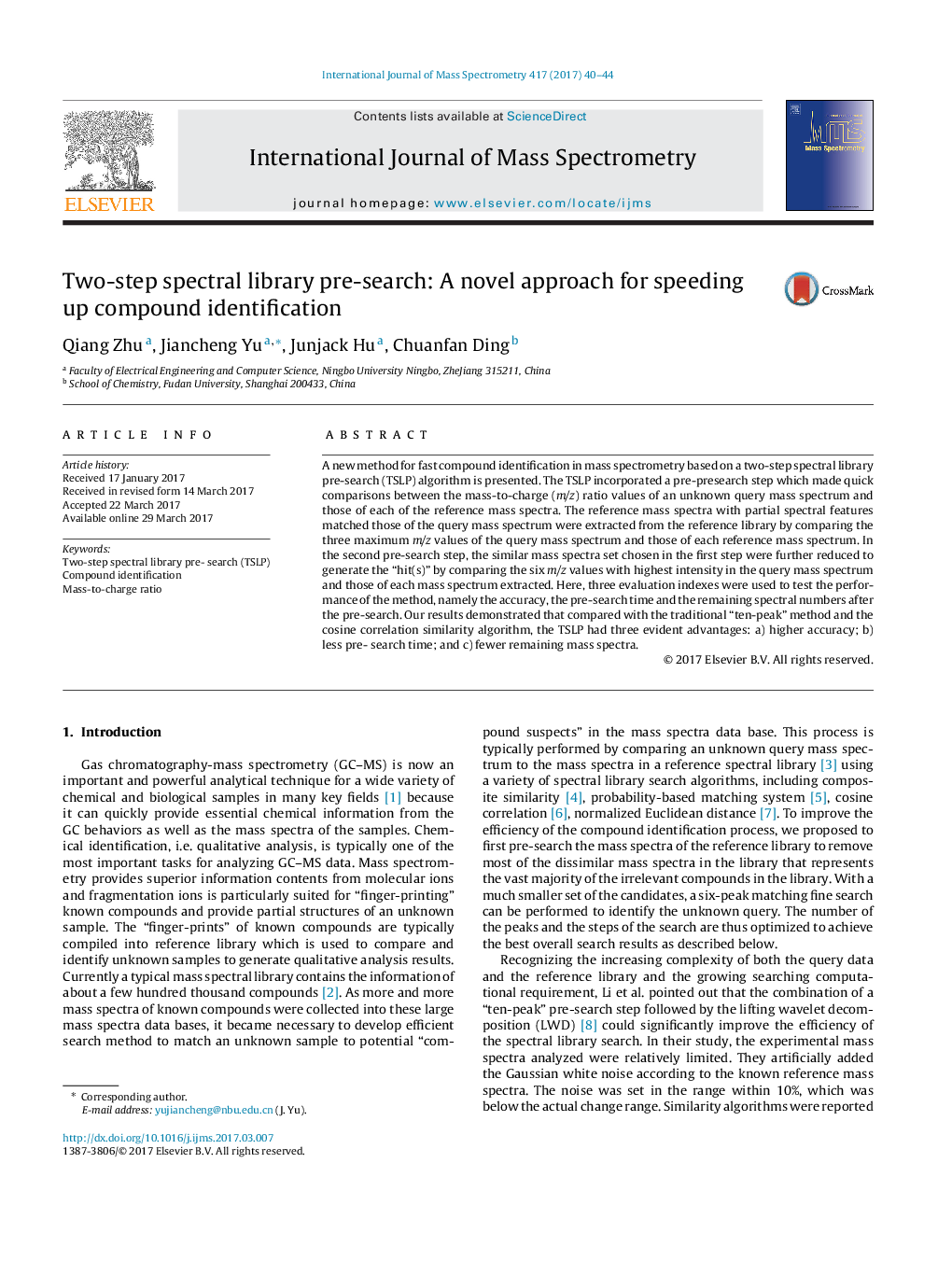| Article ID | Journal | Published Year | Pages | File Type |
|---|---|---|---|---|
| 5134312 | International Journal of Mass Spectrometry | 2017 | 5 Pages |
â¢The number of remaining reference spectra is less.â¢The pre-search accuracy is higher.â¢The pre-search time is shorter.â¢The operation mode of two-step spectral library pre-search (TSLP) is also very simple.
A new method for fast compound identification in mass spectrometry based on a two-step spectral library pre-search (TSLP) algorithm is presented. The TSLP incorporated a pre-presearch step which made quick comparisons between the mass-to-charge (m/z) ratio values of an unknown query mass spectrum and those of each of the reference mass spectra. The reference mass spectra with partial spectral features matched those of the query mass spectrum were extracted from the reference library by comparing the three maximum m/z values of the query mass spectrum and those of each reference mass spectrum. In the second pre-search step, the similar mass spectra set chosen in the first step were further reduced to generate the “hit(s)” by comparing the six m/z values with highest intensity in the query mass spectrum and those of each mass spectrum extracted. Here, three evaluation indexes were used to test the performance of the method, namely the accuracy, the pre-search time and the remaining spectral numbers after the pre-search. Our results demonstrated that compared with the traditional “ten-peak” method and the cosine correlation similarity algorithm, the TSLP had three evident advantages: a) higher accuracy; b) less pre- search time; and c) fewer remaining mass spectra.
Graphical abstractThe graphical abstract is the workflow of two-step spectral library pre- search (TSLP), which has two pre-search steps. TSLP has three advantages: a) higher accuracy; b) less pre-search time; and c) fewer remaining mass spectra.Download high-res image (123KB)Download full-size image
